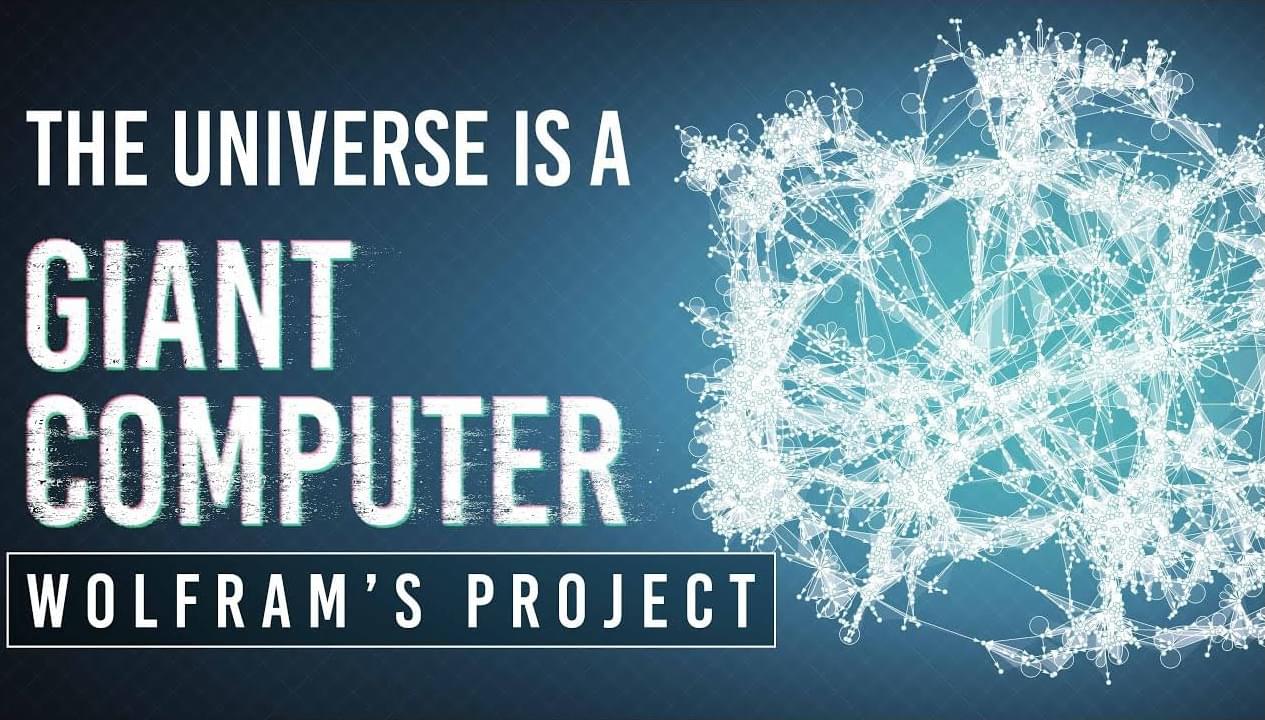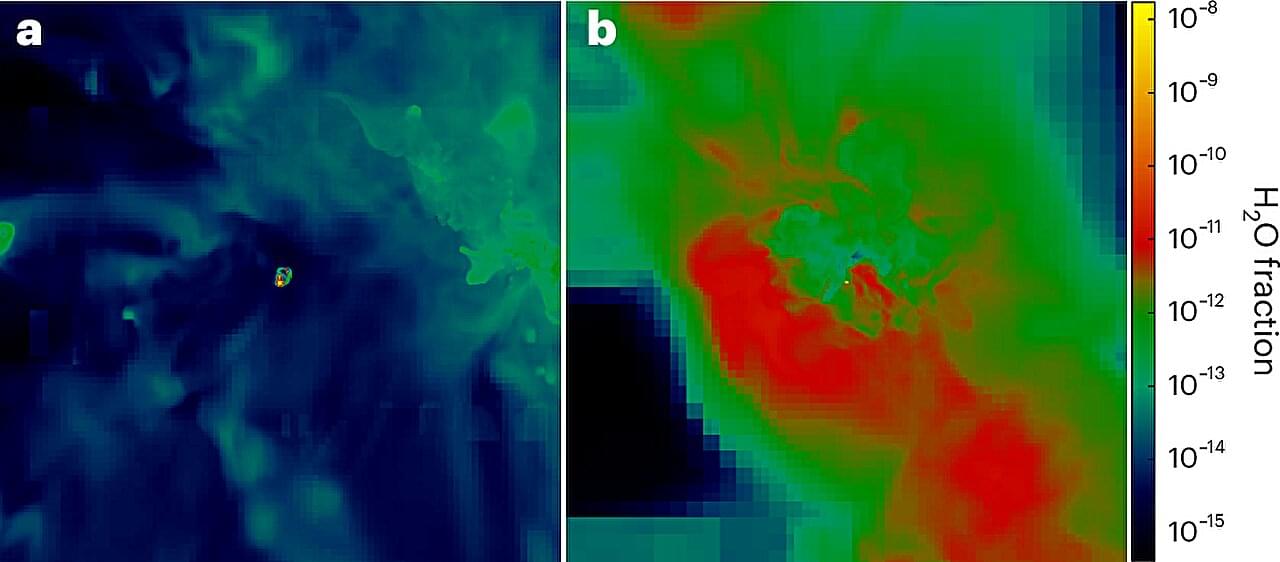Einstein’s theory of general relativity suggests that the “memory” of ancient events, such as black hole mergers, may be etched into the fabric of space-time by gravitational waves. New research shows how this theory of gravitational memory could finally be proven.
Category: cosmology – Page 8
Back in 1971, a couple of British astronomers predicted the existence of a black hole at the center of our galaxy. And in 1974, other astronomers found it, naming it Sagittarius A*.
Since then, astronomers have discovered that a similar “supermassive black hole” sits at the center of almost every other large galaxy. In 2019, they took the first image of a supermassive black hole. Today, these exotic objects are a fundamental part of our understanding of how galaxies form and evolve.
But what of smaller astronomical bodies, like the Large Magellanic Cloud, a dwarf satellite galaxy that is expected to collide with the Milky Way in 2.4 billion years? Nobody is quite sure whether clouds like this might also house supermassive black holes.
Astronomers have discovered strong evidence for the closest supermassive black hole outside of the Milky Way galaxy. This giant black hole is located in the Large Magellanic Cloud, one of the nearest galactic neighbors to our own.
To make this discovery, researchers traced the paths with ultra-fine precision of 21 stars on the outskirts of the Milky Way. These stars are traveling so fast that they will escape the gravitational clutches of the Milky Way or any nearby galaxy. Astronomers refer to these as “hypervelocity” stars.
Similar to how forensic experts recreate the origin of a bullet based on its trajectory, researchers determined where these hypervelocity stars come from. They found that about half are linked to the supermassive black hole at the center of the Milky Way. However, the other half originated from somewhere else: a previously-unknown giant black hole in the Large Magellanic Cloud (LMC).
To black holes merged and flew away.
A supermassive black hole that doesn’t appear to be where we would expect seems to be travelling at more than a thousand kilometres per second – the result of a giant cosmic collision.
By Alex Wilkins
In human engineering, we design systems to be predictable and controlled. By contrast, nature thrives on systems where simple rules generate rich, emergent complexity. The computational nature of the universe explains how simplicity can generate the complexity we see in natural phenomena. Imagine being able to understand everything about the universe and solve all its mysteries by a computational approach that uses very simple rules. Instead of being limited to mathematical equations, using very basic computational rules, we might be able to figure out and describe everything in the universe, like what happened at the very beginning? What is energy? What’s the nature of dark matter? Is traveling faster than light possible? What is consciousness? Is there free will? How can we unify different theories of physics into one ultimate theory of everything?
This paradigm goes against the traditional notion that complexity in nature must arise from complicated origins. It claims that simplicity in fundamental rules can produce astonishing complexity in behavior. Entering the Wolfram’s physics project: The computational universe!
Thousands of hours have been dedicated to the creation of this video. Producing another episode of this caliber would be difficult without your help. If you would like to see more, please consider supporting me on / disculogic, or via PayPal for a one-time donation at https://paypal.me/Disculogic.
Chapters:
00:00 Intro.
01:48 Fundamentally computational.
08:51 Computational irreducibility.
13:14 Causal invariance.
16:16 Universal computation.
18:44 Spatial dimensions.
21:36 Space curvature.
23:52 Time and causality.
27:12 Energy.
29:38 Quantum mechanics.
31:31 Faster than light travel.
34:56 Dark matter.
36:30 Critiques.
39:15 Meta-framework.
41:19 The ultimate rule.
44:21 Consciousness.
46:00 Free will.
48:02 Meaning and purpose.
49:09 Unification.
55:14 Further analysis.
01:02:30 Credits.
#science #universe #documentary
New measurements of a certain type of supernova seems to indicate that our expanding universe isn’t accelerating at all, negating any need to invoke a mysterious ‘dark energy’ to explain supernovae observations.
The Axion Longitudinal Plasma Haloscope (ALPHA) experiment reached a milestone on February 24 with the successful installation of a Bluefors helium dilution fridge at the site of the experiment in Wright Lab.
ALPHA will extend the search for a hypothetical dark matter candidate—a very low-mass particle called the axion—to a higher mass range than has been searched for previously.
Michael Jewell, associate research scientist in physics and a member of Yale’s Wright Lab is the ALPHA project technical coordinator. Jewell explained, “In order for ALPHA to achieve its physics goal, we need to limit any potential noise source. For us, the biggest source of noise is thermal noise from the experiment. So we operate the whole experiment in the coldest commercially available systems, which are helium dilution fridges that are able to cool down to ~10 millikelvin (mK).”
A strange new conception of how time warps across the universe does away with cosmology’s most mysterious entity, dark energy.
By Stuart Clark
Water may have first formed 100–200 million years after the Big Bang, according to a modeling paper published in Nature Astronomy. The authors suggest that the formation of water may have occurred in the universe earlier than previously thought and may have been a key constituent of the first galaxies.
Water is crucial for life as we know it, and its components—hydrogen and oxygen—are known to have formed in different ways. Lighter chemical elements such as hydrogen, helium and lithium were forged in the Big Bang, but heavier elements, such as oxygen, are the result of nuclear reactions within stars or supernova explosions. As such, it is unclear when water began to form in the universe.
Researcher Daniel Whalen and colleagues utilized computer models of two supernovae—the first for a star 13 times the mass of the sun and the second for a star 200 times the mass of the sun—to analyze the products of these explosions. They found that 0.051 and 55 solar masses (where one solar mass is the mass of our sun) of oxygen were created in the first and second simulation, respectively, due to the very high temperatures and densities reached.
In 1974, science fiction author Larry Niven wrote a murder mystery with an interesting premise: could you kill a man with a tiny black hole?
I won’t spoil the story, though I’m willing to bet most people would argue the answer is clearly yes. Intense gravity, tidal forces, and the event horizon would surely lead to a messy end.
But it turns out the scientific answer is a bit more interesting.









